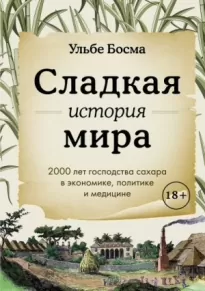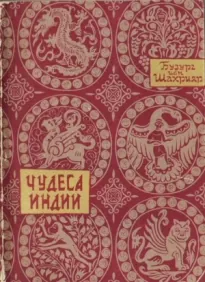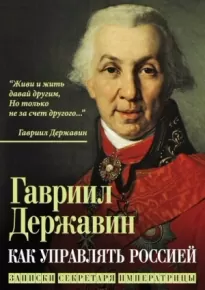Сладкая история мира. 2000 лет господства сахара в экономике, политике и медицине

- Автор: Ульбе Босма
- Жанр: Научная литература / Исторические приключения / История: прочее
Читать книгу "Сладкая история мира. 2000 лет господства сахара в экономике, политике и медицине"
7. Кризис и чудесный тростник
1 О Гонконге см.: Jennifer Lang, «Taikoo Sugar Refinery Workers’ Housing Progressive Design by a Pioneering Commercial Enterprise,» Journal of the Royal Asiatic Society Hong Kong Branch 57 (2017): 130–157.
2 George Martineau, «The Brussels Sugar Convention,» Economic Journal 14 (1904): 34.
3 Klaus J.Bade, «Land oder Arbeit? Transnationale und interne Migration im deutschen Nordosten vor dem Ersten Weltkrieg» (PhD diss., University of Erlangen-Nuremberg, 1979), 277–278.
4 E.Sowers, «An Industrial Opportunity for America,» North American Review 163, no. 478 (1896): 321; George Martineau, «The Statistical Aspect of the Sugar Question,» Journal of the Royal Statistical Society 62, no. 2 (1899): 297.
5 Julius Wolf, Zuckersteuer und Zuckerindustrie in den europäischen Ländern und in der amerikanischen Union von 1882 bis 1885, mit besonderer Rücksichtnahme auf Deutschland und die Steuerreform Daselbst (Tübingen: Mohr Siebeck, 1886), 3–4; Martineau, «The Statistical Aspect of the Sugar Question,» 298–300.
6 John Franklin Crowell, «The Sugar Situation in Europe,» Political Science Quarterly 14, no. 1 (1899): 89, 97, 100.
7 César J.Ayala, «Social and Economic Aspects of Sugar Production in Cuba, 1880–1930,» Latin American Research Review 30, no. 1 (1995): 97, 99; Wikipedia, s.v. «Julio de Apezteguía y Tarafa,» дата обращения: 27.01.2022, https://es.wikipedia.org/wiki/Julio_de_Apeztegu%C3%ADa_y_Tarafa.
8 Roger Munting, «The State and the Beet Sugar Industry in Russia before 1914,» in Crisis and Change in the International Sugar Economy 1860–1914, ed. Bill Albert and Adrian Graves (Norwich, England: ISC Press, 1984), 26; Martineau, «The Statistical Aspect of the Sugar Question,» 314; A. Seyf, «Production of Sugar in Iran in the Nineteenth Century,» Iran 32 (1994): 140, 142–143.
9 Em Hromada, Die Entwicklung der Kartelle in der österreichisch-ungarischen Zuckerindustrie (Zurich: Aktien-Buchdruckerei, 1911), 52–99.
10 Martijn Bakker, Ondernemerschap en Vernieuwing: De Nederlandse Bietsuikerindustrie, 1858–1919 (Amsterdam: NEHA, 1989), 119–121, 125–128.
11 R.W.Beachey, The British West Indies Sugar Industry in the Late 19th Century (Oxford: B. Blackwell, 1957), 115; Richard A.Lobdell, Economic Structure and Demographic Performance in Jamaica, 1891–1935 (New York: Garland, 1987), 327; Benito Justo Legarda, After the Galleons: Foreign Trade, Economic Change and Entrepreneurship in the Nineteenth-Century Philippines (Quezon City, Philippines: Ateneo de Manila University Press, 2002), 320–326.
12 Ulbe Bosma and Remco Raben, Being «Dutch» in the Indies: A History of Creolisation and Empire, 1500–1920 (Singapore: NUS Press, 2008), 260–261.
13 Bijlagen Handelingen der Tweede Kamer 1894–1895 [150.1–7], «Schorsing der Heffing van het Uitvoerrecht van Suiker in Nederlandsch-Indië» [ «Приостановление экспортных пошлин на сахар для Голландских Индий»].
14 C.Y.Shephard, «The Sugar Industry of the British West Indies and British Guiana with Special Reference to Trinidad,» Economic Geography 5, no. 2 (1929): 152–153; Alan H. Adamson, Sugar without Slaves: The Political Economy of British Guiana, 1838–1904 (New Haven, CT: Yale University Press, 1972), 190–192, 212.
15 См., например: O.Nigel Bolland, On the March: Labour Rebellions in the British Caribbean, 1934–39 (Kingston, Jamaica: Ian Randle, 1995), 179.
16 Teresita Martinez Vergne, «New Patterns for Puerto Rico’s Sugar Workers: Abolition and Centralization at San Vicente, 1873–92,» Hispanic American Historical Review 68, no. 1 (1988): 53–59.
17 Одна из самых знаменитых работ: J. S. Furnivall, Netherlands India: A Study of Plural Economy (Cambridge: Cambridge University Press, 1939), 196–199.
18 Carol A.MacLennan, Sovereign Sugar: Industry and Environment in Hawaii (Honolulu: University of Hawaii Press, 2014), 100–101.
19 См., например: Andrés Ramos Mattei, «The Plantations of the Southern Coast of Puerto Rico: 1880–1910,» Social and Economic Studies 37, nos. 1–2 (1988): 385. См. также: Martín Rodrigo y Alharilla, «Los ingenios San Agustín y Lequeitio (Cienfuegos): Un estudio de caso sobre la rentabilidad del negocio del azúcar en la transición de la esclavitud al trabajo asalariado (1870–1886),» in Azúcar y esclavitud en el final del trabajo forzado: Homenaje a M.Moreno Fraginals, ed. José A.Piqueras Arenas (Madrid: Fondo de Cultura Económica, 2002): 252–268; César J.Ayala, American Sugar Kingdom: The Plantation Economy of the Spanish Caribbean, 1898–1934 (Chapel Hill: University of North Carolina, 1999), 102.
20 Humberto García Muñiz, Sugar and Power in the Caribbean: The South Porto Rico Sugar Company in Puerto Rico and the Dominican Republic, 1900–1921 (San Juan, Puerto Rico: La Editorial, 2010), 69; Ulbe Bosma, «Sugar and Dynasty in Yogyakarta,» in Sugarlandia Revisited: Sugar and Colonialism in Asia and the Americas, 1800–1940, ed. U.Bosma, J.R.Giusti-Cordero, and R.G.Knight (New York: Berghahn Books, 2007), 90.
21 Christian Schnakenbourg, «La création des usines en Guadeloupe (1843–1884),» Bulletin de la Societé d’Histoire de la Guadeloupe, no. 141 (2005): 63–64, 71–74; Beachey, The British West Indies, 33.
22 Cecilia Karch, «From the Plantocracy to B.S.&T.: Crisis and Transformation of the Barbadian Socioeconomy, 1865–1937,» in Emancipation IV: A Series of Lectures to Commemorate the 150th Anniversary of Emancipation, ed. Woodville Marshall (Kingston, Jamaica: Canoe Press, 1993), 38–43.
23 Wikipedia, s.v. «Julio de Apezteguía y Tarafa.» См. также: Rodrigo y Alharilla, «Los ingenios.»
24 Teresita Martínez-Vergne, Capitalism in Colonial Puerto Rico: Central San Vicente in Late Nineteenth Century (Gainesville: University Press of Florida, 1992), 74, 90–92, 98–100.
25 См.: Roger Knight, «Family Firms, Global Networks and Transnational Actors,» Low Countries Historical Review 133, no. 2 (2018): 27–51.
26 John Paul Rathbone, The Sugar King of Havana: The Rise and Fall of Julio Lobo, Cuba’s Last Tycoon (New York: Penguin, 2010), 69. См. также: Edwin Farnsworth Atkins, Sixty Years in Cuba: Reminiscences… (Cambridge: Riverside Press, 1926).
27 Peter F.Klarén, Modernization: Dislocation, and Aprismo: Origins of the Peruvian Aprista party, 1870–1932 (Austin: University of Texas Press, 1973), 15.
28 См. например: García Muñiz, Sugar and Power, 149–155.
29 William Kauffman Scarborough, Masters of the Big House: Elite Slaveholders of the Mid-Nineteenth-Century South (Baton Rouge: Louisiana State University Press, 2003), 40; Atkins, Sixty Years in Cuba, 50.
30 Martín Rodrigo y Alharilla, «From Periphery to Centre: Transatlantic Capital Flows, 1830–1890,» in The Caribbean and the Atlantic World Economy: Circuits of Trade, Money and Knowledge, 1650–1914, ed. Adrian Leonard and David Pretel (London: Palgrave Macmillan, 2015), 218, 225; Mattei, «The Plantations of the Southern Coast,» 374–375.
31 Широкая подборка наглядных доказательств приведена, к примеру, в источнике: Peter Post and M.L.M.Thio, The Kwee Family of Ciledug: Family, Status and Modernity in Colonial Java (Volendam, the Netherlands: LM Publishers, 2019).
32 Gilberto Freyre, Order and Progress: Brazil from Monarchy to Republic (New York: Knopf, 1970), 279–280; Gilberto Freyre, The Mansions and the Shanties (Sobrados e Mucambos): The Making of Modern Brazil (New York: A.A.Knopf, 1968), 355.
33 Sven Beckert, The Monied Metropolis: New York City and the Consolidation of the American Bourgeoisie, 1850–1896 (Cambridge: Cambridge University Press, 2001), 33.
34 Freyre, Mansions, 97; Scarborough, Masters of the Big House, 107, 124.
35 Слово «хоуле» относится к потомкам этих миссионеров (или других американских и европейских иммигрантов). Castle&Cooke, The First 100 Years: A Report on the Operations of Castle&Cooke for the Years 1851–1951 (Honolulu, 1951), 10; MacLennan, Sovereign Sugar, 88–89.
36 Klarén, Modernisation, 16–20.
37 Jacob Adler, Claus Spreckels: The Sugar King in Hawaii (Honolulu: Mutual, 1966), 52, 54, 63–65.
38 Jacob Adler, «The Oceanic Steamship Company: A Link in Claus Spreckels’ Hawaiian Sugar Empire,» Pacific Historical Review 29, no. 3 (1960): 257, 259, 261–262; Adler, Claus Spreckels, 73–78, 112–126.
39 Adler, Claus Spreckels, 99, 158, 183.
40 Adler, Claus Spreckels, 159–213.
41 MacLennan, Sovereign Sugar, 95–96; Adler, Claus Spreckels, 83–85.
42 US Congress, National Labor Relations Act: Hearings before the United States House Special Committee to Investigate National Labor Relations Board, Seventy-Sixth Congress, Third Session, on May 2, 3, 1940. Volume 22 (Washington, DC: Government Printing Office, 1973), 4525–4226; Adler, «The Oceanic Steamship Company,» 269; Adler, Claus Spreckels, 127; Castle&Cooke, The First 100 Years, 27–28.
43 Filomeno V.Aguilar, Clash of Spirits: The History of Power and Sugar Planter Hegemony on a Visayan Island (Honolulu: University of Hawaii Press, 1998), 207–208.
44 См.: Violeta B.Lopez Gonzaga, Crisis in Sugarlandia: The Planters’ Differential Perceptions and Responses and Their Impact on Sugarcane Workers’ Households (Bacolod City, Philippines: La Salle Social Research Center, 1986).
45 Alfred W.McCoy, «Sugar Barons: Formation of a Native Planter Class in the Colonial Philippines,» Journal of Peasant Studies 19, nos. 3–4 (1992): 114.
46 Peter Klaren, «The Sugar Industry in Peru,» Revista de Indias 65, no. 233 (2005): 39.
47 Ellen D.Tillman, Dollar Diplomacy by Force: Nation-Building and Resistance in the Dominican Republic (Chapel Hill: University of North Carolina Press, 2016), 189.
48 Rudolf Freund, «Strukturwandlungen der internationalen Zuckerwirtschaft: Aus dem Institut für Weltwirtschaft und Seeverkehr,» Weltwirtschaftliches Archiv 28 (1928): 32.
49 Barak Kushner, «Sweetness and Empire: Sugar Consumption in Imperial Japan,» in The Historical Consumer: Consumption and Everyday Life in Japan, 1850–2000, ed. Penelope Francks and Janet Hunter (New York: Palgrave Macmillan, 2012), 131–132.
50 Kozo Yamamura, «The Role of the Merchant Class as Entrepreneurs and Capitalists in Meiji Japan,» Vierteljahrschrift für Sozialund Wirtschaftsgeschichte 56, no. 1 (1969): 115–118; Johannes Hirschmeier, The Origins of Entrepreneurship in Meiji Japan (Cambridge, MA: Harvard University Press, 2013), 266–267.
51 G.R.Knight, Commodities and Colonialism: The Story of Big Sugar in Indonesia, 1880–1942 (Leiden: Brill, 2013), 46.
52 См.: G.Roger Knight, Trade and Empire in Early Nineteenth-Century Southeast Asia: Gillian Maclaine and His Business Network (Roydon, England: Boydell Press, 2015), 170.
53 Как правило, чистота сахара выражается в степени поляризации. Заводской белый сахар близок к 99° поляризации, а чистый сахар – почти к 100°.
54 Bosma, The Sugar Plantation, 169–171; Robert Marks, Rural Revolution in South China: Peasants and the Making of History in Haifeng County, 1570–1930 (Madison: University of Wisconsin Press, 1984), 107.
55 См., например: James Carlton Ingram, Economic Change in Thailand since 1850 (Stanford, CA: Stanford University Press, 1955), 124–125.
56 Lynn Hollen Lees, Planting Empire, Cultivating Subjects: British Malaya, 1786–1941 (New York: Cambridge University Press, 2019), 24–37, 175.
57 См.: Ulbe Bosma and Bas van Leeuwen, «Regional Variation in the GDP Per Capita of Colonial Indonesia 1870–1930,» Cliometrica (2022). https://doi.org/10.1007/s11698-022-00252-x.
58 O.Posthumus, «Java-Riet in het Buitenland,» Archief voor de Suikerindustrie in Ned.-Indië 36, no. 2 (1928): 1149; Shephard, «The Sugar Industry,» 151; Peter Griggs, «‘Rust’ Disease Outbreaks and Their Impact on the Queensland Sugar Industry, 1870–1880,» Agricultural History 69, no. 3 (1995): 427; Ulbe Bosma and Jonathan Curry-Machado, «Turning Javanese: The Domination of Cuba’s Sugar Industry by Java Cane Varieties,» Itinerario: Bulletin of the Leyden Centre for the History of European Expansion 37, no. 2 (2013): 106.
59 Posthumus, «Java-Riet in het Buitenland,» 1150; Bosma and Curry-Machado, «Turning Javanese,» 107.
60 De Locomotief, January 24, 1885.
61 D.J.Kobus, «Historisch Overzicht over het Zaaien van Suikerriet,» Archief voor de Suikerindustrie in Ned.-Indië 1 (1893): 17.
62 A.J.Mangelsdorf, «Sugar Cane Breeding: In Retrospect and in Prospect,» in Proceedings of the Ninth Congress of the International Society of Sugar Cane Technologists, ed. O.M.Henzell (Cambridge: British West Indies Sugar Association, 1956), 562.
63 W.K.Storey, «Small-Scale Sugar Cane Farmers and Biotechnology in Mauritius: The ‘Uba’ Riots of 1937,» Agricultural History 69, no. 2 (1995): 166.
64 J.A.Leon and Joseph Hume, On Sugar Cultivation in Louisiana, Cuba, &c. and the British Possessions (London: John Ollivier, 1848), 15–18.
65 Roger G.Knight, Sugar, Steam and Steel: The Industrial Project in Colonial Java, 1830–1850 (Adelaide, Australia: University of Adelaide Press, 2014), 194–195.
66 John A.Heitmann, «Organization as Power: The Louisiana Sugar Planters’ Association and the Creation of Scientific and Technical Institutions, 1877–1910,» Journal of the Louisiana Historical Association 27, no. 3 (1986): 287, 291; J.Carlyle Sitterson, Sugar Country: The Cane Sugar Industry in the South 1753–1950 (Lexington: University of Kentucky Press, 1953), 255–257.
67 Stuart George McCook, States of Nature: Science, Agriculture, and Environment in the Spanish Caribbean, 1760–1940 (Austin: University of Texas, 2002), 87–88.
68 Bosma and Curry-Machado, «Turning Javanese,» 109; T.Lynn Smith, «Depopulation of Louisiana’s Sugar Bowl,» Journal of Farm Economics 20, no. 2 (1938): 503; Thomas D.Rogers, The Deepest Wounds: A Labor and Environmental History of Sugar in Northeast Brazil (Chapel Hill: University of North Carolina Press, 2010), 104.
69 См.: J.H.Galloway, «Botany in the Service of Empire: The Barbados Cane-Breeding Program and the Revival of the Caribbean Sugar Industry, 1880s–1930s,» Annals – Association of American Geographers 86, no. 4 (1996).
70 See Leida Fernandez-Prieto, «Networks of American Experts in the Caribbean: The Harvard Botanic Station in Cuba (1898–1930),» in Technology and Globalisation: Networks of Experts in World History, ed. David Pretel and Lino Camprubi (London: Palgrave Macmillan, 2018), 159–188.
71 Association Hawaiian Sugar Planters and A.R.Grammer, A History of the Experiment Station of the Hawaiian Sugar Planters’ Association, 1895–1945 (Honolulu: Hawaiian Sugar Planters’ Association, 1947), 183.
72 Peter Griggs, «Improving Agricultural Practices: Science and the Australian Sugarcane Grower, 1864–1915,» Agricultural History 78, no. 1 (2004): 13, 21.
73 W.P.Jorissen, «In Memoriam Dr. Hendrik Coenraad Prinsen Geerligs: Haarlem 23.11.1864 – Amsterdam 31.7.1953,» Chemisch Weekblad: Orgaan van de Koninklijke Nederlandse Chemische Verenging 49, no. 49 (1953): 905–907.





